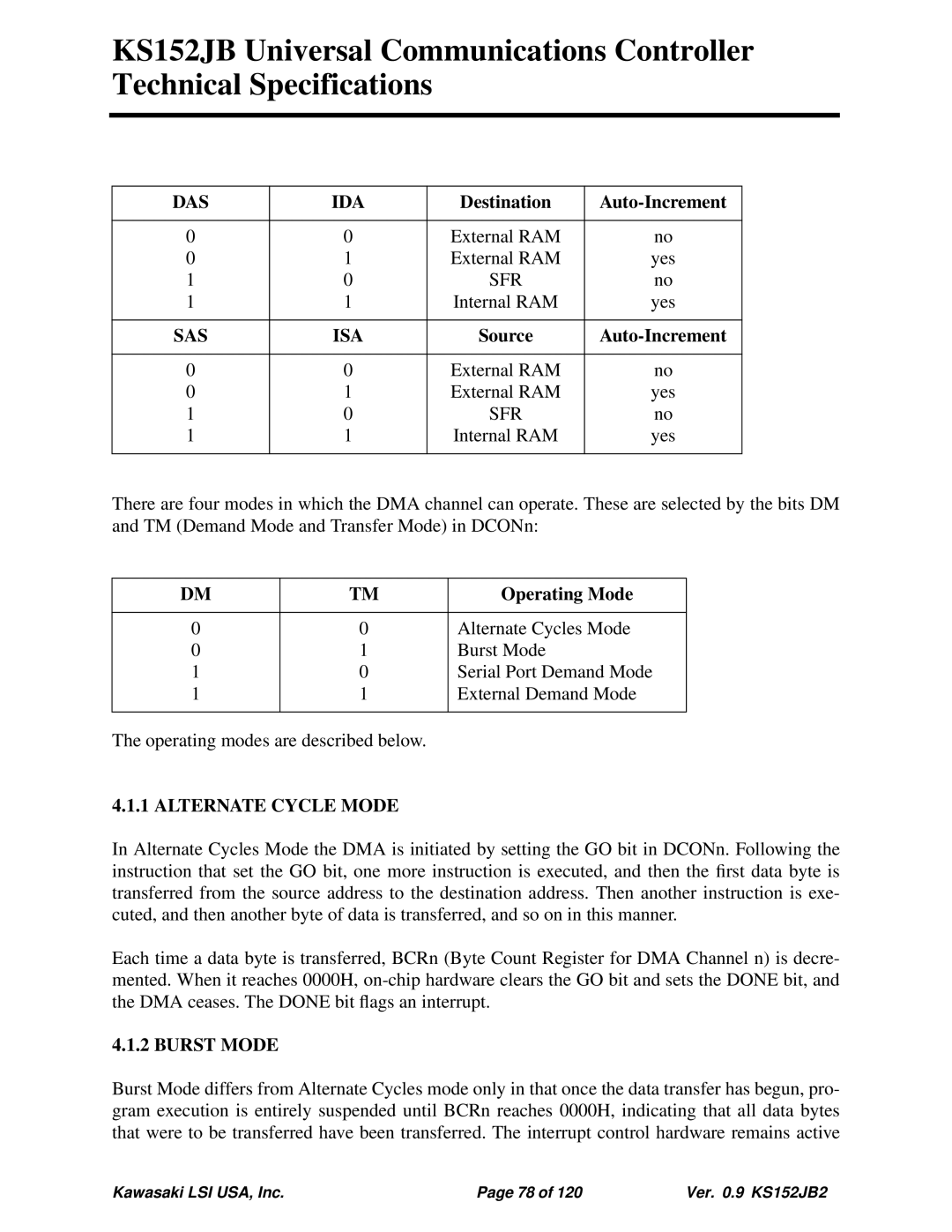
KS152JB Universal Communications Controller Technical Specifications
DAS | IDA | Destination | |
|
|
|
|
0 | 0 | External RAM | no |
0 | 1 | External RAM | yes |
1 | 0 | SFR | no |
1 | 1 | Internal RAM | yes |
|
|
|
|
SAS | ISA | Source |
|
|
|
|
|
0 | 0 | External RAM | no |
0 | 1 | External RAM | yes |
1 | 0 | SFR | no |
1 | 1 | Internal RAM | yes |
|
|
|
|
There are four modes in which the DMA channel can operate. These are selected by the bits DM and TM (Demand Mode and Transfer Mode) in DCONn:
DM | TM | Operating Mode |
|
|
|
0 | 0 | Alternate Cycles Mode |
0 | 1 | Burst Mode |
1 | 0 | Serial Port Demand Mode |
1 | 1 | External Demand Mode |
|
|
|
The operating modes are described below.
4.1.1 ALTERNATE CYCLE MODE
In Alternate Cycles Mode the DMA is initiated by setting the GO bit in DCONn. Following the instruction that set the GO bit, one more instruction is executed, and then the first data byte is transferred from the source address to the destination address. Then another instruction is exe- cuted, and then another byte of data is transferred, and so on in this manner.
Each time a data byte is transferred, BCRn (Byte Count Register for DMA Channel n) is decre- mented. When it reaches 0000H,
4.1.2 BURST MODE
Burst Mode differs from Alternate Cycles mode only in that once the data transfer has begun, pro- gram execution is entirely suspended until BCRn reaches 0000H, indicating that all data bytes that were to be transferred have been transferred. The interrupt control hardware remains active
Kawasaki LSI USA, Inc. | Page 78 of 120 | Ver. 0.9 KS152JB2 |
